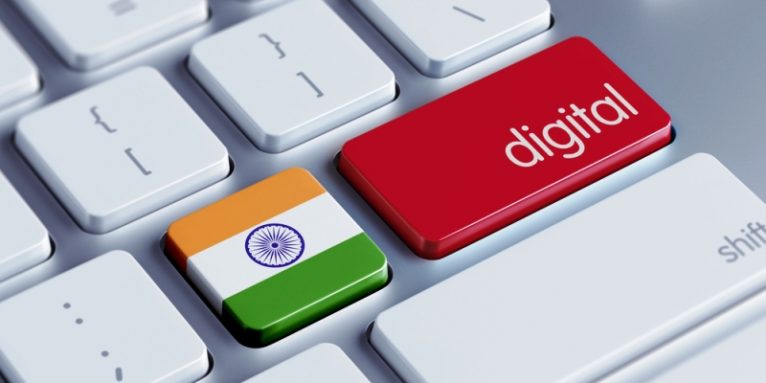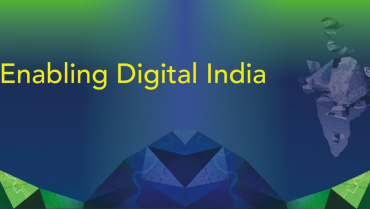Prime Minister Narendra Modi launched the Digital Media to push the use of technology to connect and empower people in areas relating to health, education, labor and employment, commerce, etc.
Under this program, the government plans to introduce Broadband Highways, Universal Access to Mobile Connectivity, Public Internet Access Programme, IT for Jobs and much more.
The governance will shift from fom e-governance tom-governance where “M is not Modi Governance, it is mobile governance,” said Modi. The initiative aims to bring big investments in the technology sector and this Rs 1.13 lakh crore initiative will help in creating a participative, transparent and responsive government.
Here are some key initiatives which form a part of Digital India week-
1.MyGov.in
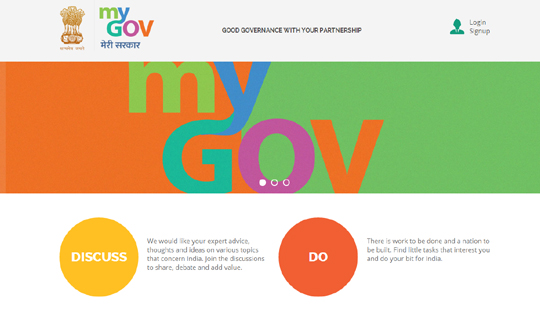
MyGov platform is a unique path breaking initiative which was launched on July 26, 2014, by none other than the Hon’ble Prime Minister of India, Shri Narendra Modi. It is a unique first of its kind participatory governance initiative involving the common citizen at large. The idea of MyGov brings the government closer to the common man by the use of online platform creating an interface for healthy exchange of ideas and views involving the common citizen and experts with the ultimate goal to contribute to the social and economic transformation of India.
MyGov platform has been more than successful in keeping the citizens engaged on important policy issues and governance, be it Clean Ganga, Girl Child Education, Skill Development and Healthy India to name a few. There is no doubt that this platform has made inroads in diminishing the gap which has traditionally existed between the citizen and the government.
The major attributes of MyGov include Discussion, Tasks, Talks, Polls, and Blogs on various groups based on the diverse governance and public policy issues.
As mentioned by the Hon’ble Prime Minister, Shri Narendra Modi, MyGov is an initiative which should culminate into a mass movement towards self-governance or ‘surajya’. As further progress is being made under the umbrella of Digital India, utilizing the technology to further revolutionalise the public service delivery and citizen engagement, MyGov platform is all set to become a key agent for this change taking inputs from the citizens, the ultimate beneficiary and leverage their collective feedback to improve policy change and implementation.
2. Swach Bharat Mission Mobile App

The Ministry of Drinking Water & Sanitation, Government of India, is the nodal Ministry for monitoring progress under the Swachh Bharat Mission, at the central level. The mSBM mobile App has been developed by the Ministry in technical collaboration with NIC. Using this App, the user can upload the photographs of beneficiaries receiving toilet facilities in their homes under this Mission, using a smartphone. While capturing the photograph, latitude, and longitude of the location as well as date – time stamp is recorded automatically and gets uploaded to the central server of the Mission which is housed in the National Data Centre.
One can register for using the mSBM App through registration form which is available on the website WWW.sbm.gov.in by logging into the system. At present this facility has been provided to state government officials, as a tool for reporting progress of Swachh Bharat Mission activities, to the central Ministry.
3. eHospital
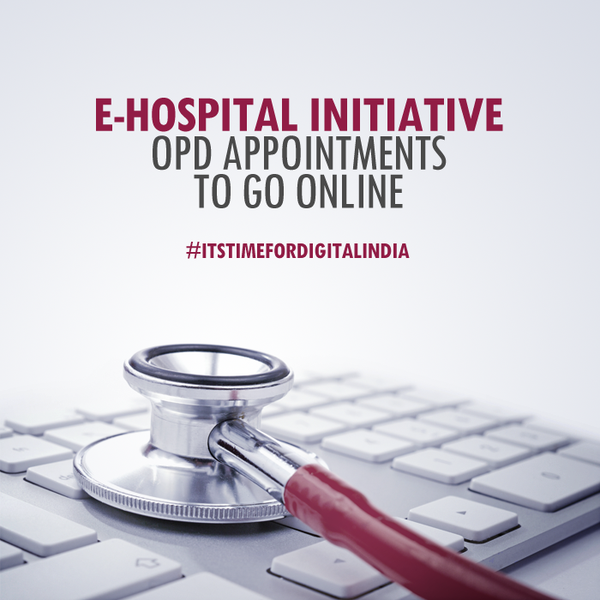
E-Hospital is an open source health information management system ( HMIS) which is configurable and easily customizable with multi-tenancy support. It is designed to deploy in cloud infrastructure to manage multiple hospitals seamlessly. The generic application addresses all major functional areas of a hospital. A workflow based HL7compliantt and ISO/IEC 9126 certified end-to-end solution Software for hospital management which covers complete treatment cycle of OPD/IPD as well integrates clinical, administrative, and billing/ insurance activities.
Modules of eHospital -:
- Patient Registration
- Radiology /Imaging (RIS)
- PACS Interface
- Blood Bank Management
- IPD(ADT)
- OT Management
- Pharmacy Management
- Emergency Registration
- Clinics
- Billing and Accounts
- Path Lab (LIS)
- Birth & Death Registration
- Student Management System ( For Teaching Hospital)
- Electronic Medical Records (EMR)
4. Digi Locker

The innovation of Ministry of Communications and Information Technology has come to the fore while launching the DigiLocker system on February 10, 2015. DigiLocker, a national Digital Locker system will be an Aadhar-linked facility for the citizens of India.
The DigiLocker, which is quite fool-proof taking into account the insecurities regarding losing our data, acts as an important facility to store crucial documents in the cloud. The technological initiative is a part of Prime Minister’s Digital policy for India. This cloud system can store documents like Voter ID Card, Pan Card, BPL Card, Driving License, education certificates, etc.
For instance, when applying for a driving license, the Regional Transport Office can issue the document and thus, upload it to the designated repository. The document will then be pushed to the concerned resident’s Aadhar card number.In this case, RTO is called the ‘issuer’.
Issuers of documents can be – Registrar Office, Income Tax department, RTO, educational institutions etc. Basically, it is the authority that makes a document electronically available.
Requesters of documents can be – Employers, Universities, Passport Office etc. This particular party wants to have a secure access to the documents.
Resident can be – One who uses the Digital Locker service based on Aadhar and OTP (one time password) authentication.
5. Centre of Excellence on Internet of Things (IoT)
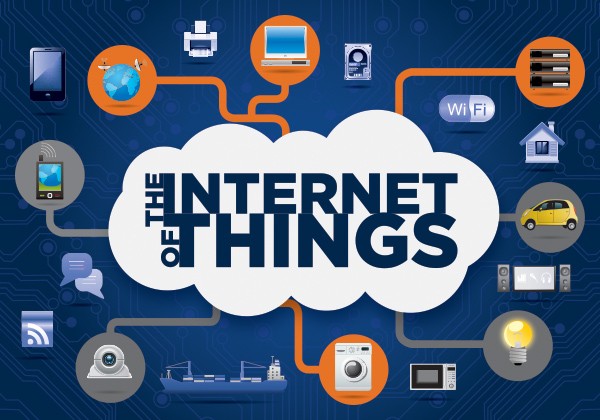
IoT is an emerging disruptive technology of the 21st century. Quite simply because “smart objects” can now freely “talk” to each other and generate enormous volumes of data, spread across disparate communication networks.
Towards this, The Centre of Excellence for IoT- a combined initiative of Department of Electronics & IT, ERNET India and NASSCOM – is expected to promote an IoT ecosystem, which is vibrant & at the same time innovative, which will help our country attain a leadership role in this field.
Objectives :-
- To create innovative applications and domain capability across verticals for country’s needs such as Smart City, Smart Health, Smart Manufacturing, Smart Agriculture, etc.
- To provide an environment for product Creation, Testing and also for Validation & Incubation.
- To reduce import dependency on IoT components and promote indigenization.
- To build industry capable talent, start-up community and entrepreneurial ecosystem for IoT.
- To position India as a provider of the end-to-end solution in Engineering space.
- To energize Research mindset and reduce costs in Research and Development by providing neutral and interoperable, multi-technology stack laboratory facilities.
6.Electronics Development Fund
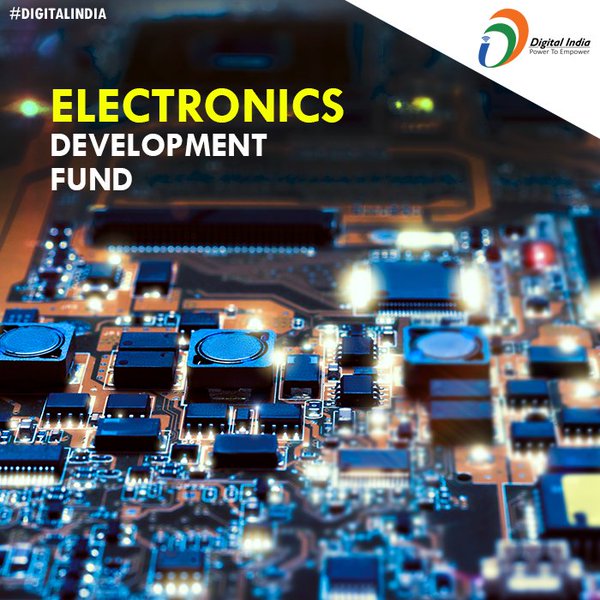
As part of the “Digital India” agenda of the Government, and to develop the Electronics System Design and Manufacturing (ESDM) sector so as to achieve “Net Zero Imports” by 2020 and to look at India as their next destination to cater to the domestic Indian demand as well as act as an exports hub in the ESDM sector. It is with this objective that an Electronic Development Fund (EDF) is set up as a “Fund of Funds” to participate in professionally managed “Daughter Funds” which in turn will provide risk capital to companies developing new technologies in the area of electronics, nano-electronics and Information Technology (IT). The EDF will also help attract venture funds, angel funds and seed funds towards R&D and innovation in the specified areas. It will help create a battery of Daughter funds and Fund Managers who will be seeking good start-ups (potential winners) and selecting them based on professional considerations.
Electronics permeate in all sectors of the economy and have a great economic and strategic importance. A major characteristic of the electronics sector is the importance of R&D and innovation due to the high velocity of technology change. Intellectual Property is the most critical differentiator and a determinant of success for an electronics company.
The Department of Electronics and Information Technology, (Ministry of Communications and IT, Government of India) is coordinating strategic activities, promoting skill development programs, enhancing infrastructure capabilities and supporting R&D for India’s leadership position in IT and IT-Enabled services. In furtherance to this objective, the Department of Electronics and Information Technology, (Ministry of Communications and IT, Government of India) has agreed to act as the Anchor Investor of the Fund.
Sectors -:
- Electronic Systems Design & Manufacturing (ESDM)
- Nano-electronics
- Information Technology & related sectors
7. Next Generation Network
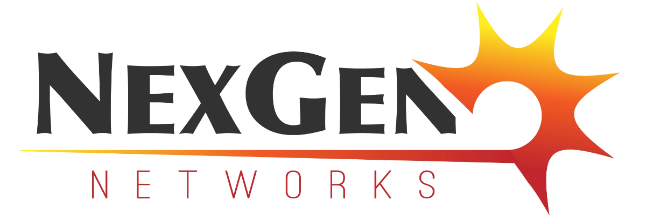
The Next-Generation Network (NGN) enables the deployment of access independent services over converged fixed and mobile networks – The NGN is packet based and uses IP to transport the various types of traffic (voice, video, data, and signaling).
At the core of the harmonized, ‘ALL IP’ NGN network is the IP Multimedia Subsystem (IMS) which provides an ‘access independent’ platform for a variety of access technologies (GSM, 3G, 4G, wi-fi, Cable, fiber, and xDSL).
Standards for fixed NGN were developed by the now closed ETSI technical committee TISPAN. The TC has adopted the 3GPP™ core IMS specifications using the Internet (SIP) protocols to allow features such as Presence, IPTV, Messaging, and Conferencing to be delivered irrespective of the network in use. Maintenance of NGN standards is now the responsibility of TC NTECH.
Standards for fixed NGN were developed by the ETSI technical committee TISPAN (Telecommunications and Internet converged Services and Protocols for Advanced Networking). In 2012 TISPAN was closed and remaining work and maintenance was transferred to TC NTECH.
Release 1
NGN Release 1 was finalized in December 2005, provided the robust and open standards that industry required for the development, testing and implementation of the first generation of NGN systems. NGN Release 1 specifications adopt the 3GPP IMS (IP Multimedia Subsystem) standard for SIP-based applications but also add further functional blocks and subsystems to handle non-SIP applications.
Release 2
NGN Release 2 was finalized early 2008 and added a key element to the NGN such as IMS and non-IMS-based IPTV, Home Networks and devices, as well as NGN, interconnect with Corporate Networks.
Release 3
The third release of specifications addressed the following topics:
- IPTV: New IPTV services have been defined including advertising, IMS enabled IPTV Roaming/Mobility, User Generated Content (UGC), and Personalised Channel (PCH)/User oriented content. The Content Delivery Network (CDN) was also defined. Peer-to- peer technologies for delivering IPTV services have been analyzed. IPTV service protection was also addressed.
- Network interconnection.
- Radio Frequency Identification (RFID) security.
- NGN security enhancements.
- Energy monitoring in the customer premises network.
- Regulatory issues.
8.Wi-fi Hotspots

Wireless (or wi-fi) hotspots are essentially wireless access points providing network and/or Internet access to mobile devices like your laptop or smartphone, typically in public locations. To put it more simply, they’re places where you can take your laptop or other mobile device and wirelessly connect to the Internet; some devices and smartphones also act as mobile wi-fi hotspots.
Typical wi-fi hotspot venues include cafes, libraries, airports, and hotels.
Though many are free, some hotspots require a subscription or service with a particular mobile provider (e.g., Starbucks has exclusive deals with T-Mobile and AT&T customers).
Connecting to a hotspot and using its Internet connection basically works the same as other home or business wireless connection set up steps: Your wireless-equipped laptop or other devices, such as an iPod or smartphone, will typically notify you when it is in the range of available wireless networks. (If you don’t get the “wireless networks are available” information prompt, you can go into your network settings to find available wireless networks.) You then just accept or initiate the connection to the hotspot’s wireless network, which is usually identified in the network name (SSID). Some network cards will even automatically connect to the hotspot once it is in range, but this is generally a bad idea; for security’s sake, follow our friend Bradley Mitchell’s instructions for turning off automatic connections to unsecured access points.
if the wi-fi hotspot network is encrypted or hidden, you would need to get the security key and/or SSID information from the hotspot service provider to be able to locate and properly establish the network connection. Also, before allowing you to use their Internet connection, most hotspots will require you to accept their terms and conditions (which will generally require you to be a decent, law-abiding Internet citizen).
9. Bharat Net
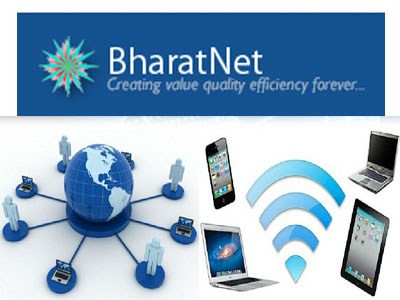
Under this initiative, a high-speed digital highway will connect all 250,000-gram panchayats of the country. This is the world’s largest rural broadband project using optical fiber.
Vision
BharatNet shall be a project of national importance to establish, by 2017, a highly scalable network infrastructure accessible on a non-discriminatory basis, to provide on-demand, affordable broadband connectivity of 2 Mbps to 20 Mbps for all households and on-demand capacity to all institutions, to realise the vision of Digital India, in partnership with States and the private sector.
The entire project is being funded by Universal service Obligation Fund (USOF), which was set up for improving telecom services in rural and remote areas of the country. The objective is to facilitate the delivery of e-governance, e-health, e-education, e-banking, the Internet and other services to the rural India.
Implementation
The project is a Centre-State collaborative project, with the States contributing free Rights of Way for establishing the Optical Fibre Network. The three-phase implementation of the BharatNet project is as follows
- The first phase envisages providing one lakh gram panchayats with broadband connectivity by laying underground optic fiber cable (OFC) lines by March 2017.
- The second phase will provide connectivity to all 2,50,500 gram panchayats in the country using an optimal mix of underground fiber, fiber over power lines, radio and satellite media. It is to be completed by December 2018. For success in phase-2, which will also involve laying of OFC over electricity poles, the participation of states will be important. This is a new element of the BharatNet strategy as the mode of connectivity by aerial OFC has several advantages, including lower cost, speedier implementation, easy maintenance and utilization of existing power line infrastructure. The last mile connectivity to citizens was proposed to be provided creating Wi-Fi hotspots in gram panchayats.
- In the third phase from 2018 to 2023, state-of-the-art, future-proof network, including fiber between districts and blocks, with ring topology to provide redundancy would be created.
10. Digitize India Platform

Digitize India Platform (DIP) is an initiative of the Government of India under the Digital India Programme to provide digitization services for scanned document images or physical documents for any organization. The aim is to digitize and make usable all the existing content in different formats and media, languages, digitize and create data extracts for document management, IT applications and records management.
DIP provides an innovative solution by combining machine intelligence and a cost effective crowdsourcing model. It features a secure and automated platform for processing and extracting relevant data from document images in a format that is usable for meta-data tagging, IT application processing and analysis.
Advantage People
-Earn for every character you digitize
-Earn on the move. Soon the digitization would be available as a mobile app. One could digitize data on the move.
Digitize India Platform leverages an innovative algorithm and technology to enable digitization of any kind of record at a reasonable price while keeping it secure. Since the platform uses crowdsourcing, it provides income generation opportunity for all by facilitating people to work from home or location/place as convenient to them. The algorithm requires every word/phrase to be sent to two disconnected persons randomly selected. Each one digitizes the word and submits. If the digitization by both persons matches they get rewarded as per a number of characters digitized. Based on words successfully digitized, the user keeps accumulating rewards and whenever he/she wishes, the amount can be credited to their Bank account directly.
11. National Scholarship Portal
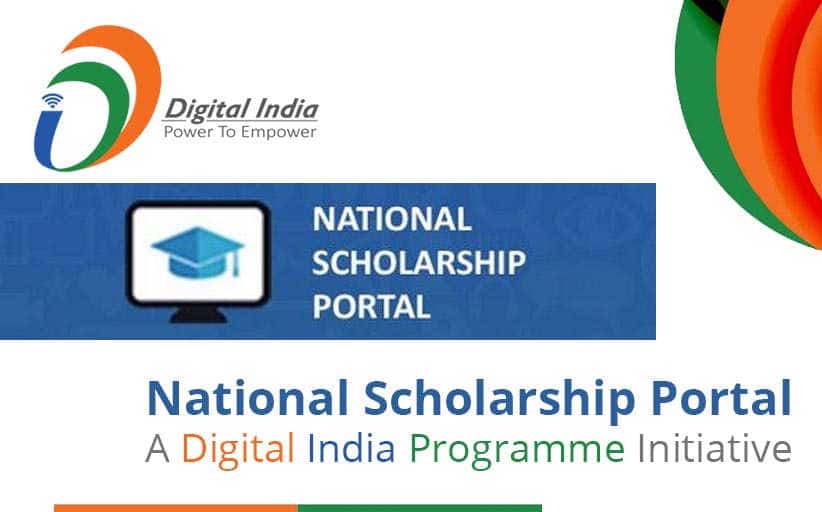
National Scholarships Portal is a one-stop solution through which various services starting from student application, application receipt, processing, sanction and disbursal of various scholarships to Students are enabled. National Scholarships Portal is taken as Mission Mode Project under National e-Governance Plan (NeGP).
Vision
National Scholarships Portal is a one-stop solution through which various services starting from student application, application receipt, processing, sanction and disbursal of various scholarships to Students are enabled.
This initiative aims at providing a Simplified, Mission-oriented, Accountable, Responsive & Transparent ‘SMART’ System for faster & effective disposal of Scholarships applications and delivery of funds directly into beneficiaries account without any leakages.
Objectives
- Ensure timely disbursement of Scholarships to students.
- Provide a common portal for various Scholarships schemes of Central and State Governments.
- Create a transparent database of scholars.
- Avoid duplication in processing.
- Harmonization of different Scholarships schemes & norms.
- Application of Direct Benefit Transfer.
Benefits
- Simplified process for the students.
- All scholarships information available under one umbrella.
- Single integrated application for all scholarships.
- Improved transparency.
- The system suggests the schemes for which a student is eligible.
- Duplicates can be reduced to the maximum extent.
- Helps in standardization.
- Master data for Institutions and courses at all India level.
- Scholarships processing.
- Serves as a decision support system (DSS) for Ministries and departments as up-to-date information will be available on demand.
- Comprehensive MIS System to facilitate monitoring every stage of Scholarships distribution i.e. from student registration to delivery of funds.
12. eSign Framework

For creating electronic signatures, the signer is required to obtain a Digital Signature Certificate (DSC) from a Certifying Authority (CA) licensed by the Controller of Certifying Authorities (CCA) under the Information Technology (IT) Act, 2000. Before a CA issues a DSC, the identity and address of the signer must be verified. The private key used for creating the electronic signature is stored in hardware cryptographic token which is secured with a password/pin. This current scheme of in-person physical presence, paper document based identity & address verification and issuance of hardware cryptographic tokens does not scale to a billion people. For offering fully paperless citizen services, mass adoption of the digital signature is necessary. A simple to use online service is required to allow everyone to have the ability to digitally sign electronic documents.
eSign
eSign is an online electronic signature service which can be integrated with service delivery applications via an open API to facilitate an Aadhaar holder to digitally sign a document. Using authentication of the Aadhaar holder through Aadhaar e-KYC service, online electronic signature service is facilitated.
Salient Features of eSign
- Save cost and time.
- Aadhaar e-KYC based authentication.
- Improve user convenience.
- Mandatory Aadhaar ID.
- Easily apply Digital Signature.
- Biometric or OTP-based authentication.
- Verifiable Signatures and Signatory.
- Flexible and fast integration with the application.
- Legally recognized.
- Suitable for individual business and Government.
- Managed by Licensed CAs
- API Subscription Model
- Privacy concerns addressed
- Assured Integrity with complete audit trail
- Simple Signature verification
- Immediate destruction of keys after usage
- Short validity certificates
- No concerns regarding key storage and key protection
Credit – the better India, Wikipedia, CCA, CSC, digitize India, e d f India, Nasscom
